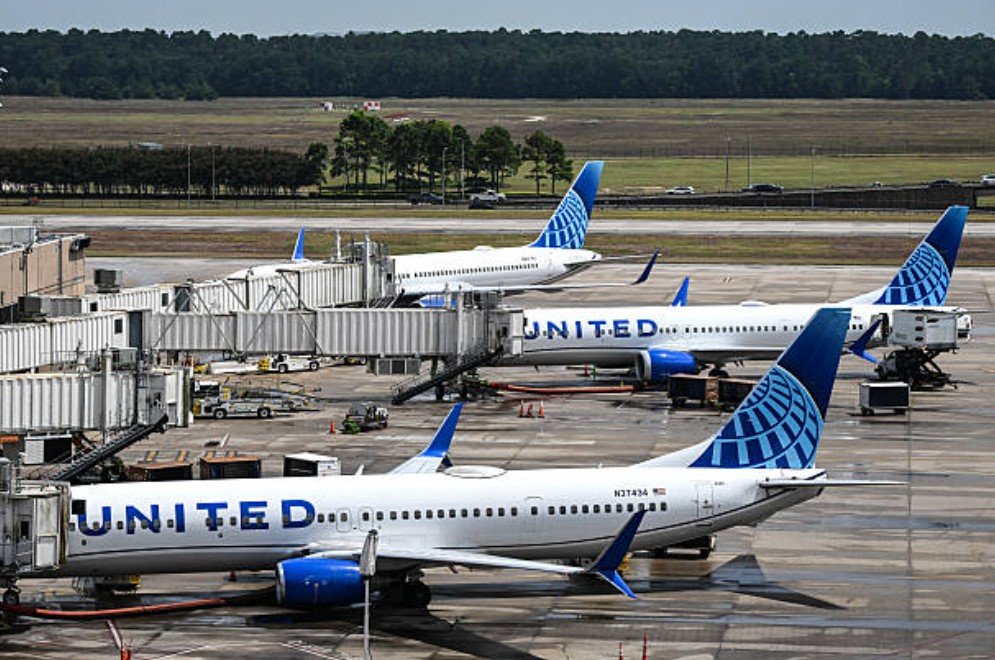News
Emergency Diversion of United Airlines Flight UA770 – Full Details

On May 27, 2025, United Airlines Flight UA770, operating a scheduled service from Barcelona, Spain, to Newark, United States, declared an emergency in flight and diverted to London Heathrow Airport. The incident drew attention from aviation observers and media outlets, as it involved a long-haul Boeing 787-9 Dreamliner making an unplanned stopover mid-journey. The following is a detailed account of what happened, including flight information, the sequence of events, and what occurred after landing.
Flight Information
United Airlines Flight UA770 was scheduled to operate from Barcelona–El Prat Airport (BCN) to Newark Liberty International Airport (EWR). The aircraft assigned to the flight was a Boeing 787-9, registration number N26902. This Dreamliner is part of United’s widebody fleet used for transatlantic and other long-haul services. The 787-9 model is known for its fuel efficiency and long range, making it well-suited for the nearly 4,000-mile journey between Barcelona and Newark.
The flight departed Barcelona approximately 1 hour and 30 minutes before the emergency declaration. Initial tracking data indicated that the aircraft climbed to its planned cruising altitude and was proceeding along its assigned route toward the Atlantic crossing.
Emergency Declaration
At around 14:58 UTC, while still over Europe, the pilots of UA770 transmitted a squawk code of 7700 on their transponder. This is a general emergency signal used in aviation to indicate that the aircraft is experiencing an urgent situation requiring immediate assistance or priority handling by air traffic control. The exact reason for the emergency declaration has not yet been confirmed by United Airlines or aviation authorities, but a squawk of 7700 can be used for a wide range of in-flight issues, including medical situations, technical malfunctions, or other operational concerns.
Upon declaring the emergency, the flight crew coordinated with air traffic controllers to identify a suitable diversion airport. London Heathrow Airport (LHR) was selected, likely due to its capacity to handle widebody aircraft, availability of United Airlines’ ground operations, and the ability to provide the necessary support for the situation.
Diversion to London Heathrow
Once the decision was made, UA770 adjusted its course toward London. The diversion involved descending from cruising altitude and aligning with Heathrow’s busy arrival streams. Air traffic controllers ensured that the aircraft had priority clearance for landing.
The estimated arrival time at Heathrow was set for 4:55 PM BST. Aviation enthusiasts and flight tracking services closely followed the aircraft’s progress as it approached the UK. Emergency services were likely placed on standby, as is standard protocol for declared emergencies, although there is no indication that any unusual response was required beyond precautionary measures.
Read more: Why British Airways Flight BA286 Was Forced into an Emergency Landing
Landing at Heathrow
UA770 landed safely on runway 27R at Heathrow. The landing was completed without reported incident, and the aircraft was able to taxi under its own power to the assigned gate. The chosen stand for the aircraft was Gate B44, located in Heathrow’s Terminal 2, which is used by United Airlines and other Star Alliance carriers.
The arrival at Gate B44 allowed ground crews to connect the aircraft to airport services, enabling passengers to disembark if necessary, and providing engineers with access to the aircraft for inspection. It also gave the airline an opportunity to address whatever issue prompted the diversion before deciding on the next steps for the flight.
Stopover Plan
United Airlines confirmed to AIRLIVE that the diversion was to London Heathrow and indicated that an initial stopover of around one hour was planned. This would give time for any necessary checks, passenger assistance, or operational adjustments. However, such estimates can change depending on the nature of the situation. For example, a technical issue might require more extensive inspection or repairs, while a medical situation could necessitate that passengers or crew receive care before the flight can resume.
Aircraft and Crew
The Boeing 787-9, registered N26902, is a member of United’s Dreamliner fleet used extensively for transatlantic and transpacific flights. This type of aircraft is configured with multiple seating classes, including Polaris Business Class, Premium Plus, Economy Plus, and standard Economy seating. The crew operating UA770 would have included a team of experienced pilots trained in diversion procedures and a cabin crew responsible for passenger safety and comfort.
When an in-flight emergency occurs, the pilots work through established checklists and coordinate with airline operations and air traffic control to ensure the safest possible outcome. Diversions to airports like Heathrow are often chosen because they have the resources to manage both the aircraft and the needs of passengers during unscheduled stops.
Passenger Experience
While detailed accounts from passengers on UA770 have not been widely published, it is standard practice for the flight crew to inform travelers about the nature of the diversion in general terms. Passengers would have been briefed on the estimated time to the new destination, any safety considerations, and the next steps upon arrival.
Once on the ground, passengers may be asked to remain seated until the situation is assessed. If the stopover is brief, they might remain on board while ground crews work. In cases where the delay is extended, passengers could be asked to disembark and wait in the terminal. United’s ground staff at Heathrow would assist in providing information, refreshments, and any necessary rebooking or onward travel arrangements.
Airline Statement and Media Coverage
United Airlines confirmed the diversion to media outlets and flight tracking services, but as of now, no detailed explanation for the emergency has been released publicly. In many cases, airlines refrain from sharing operational specifics until a full review is complete.
Aviation-focused news outlets and live flight tracking services like AIRLIVE monitored the situation in real time. Their reports included the timeline of events, the aircraft’s registration, and the fact that the aircraft was now parked at Gate B44 in Terminal 2.
Standard Procedures for Diversions
An emergency diversion is a complex process that involves multiple parties working together to ensure safety. The flight crew must make a quick decision about where to land, considering factors such as runway length, weather conditions, available maintenance facilities, and medical support if needed. Air traffic controllers provide vectors to the diversion airport and clear other traffic from the path. Ground crews prepare for the arrival, and emergency services are notified in case their assistance is required.
For airlines, the priority is always passenger and crew safety. This can mean incurring significant operational costs, such as fuel for the diversion, landing fees at a major airport, and possible delays for other flights, but safety decisions are never compromised for cost reasons.
Why Heathrow was Chosen
London Heathrow is one of the busiest international airports in the world, but it is also one of the most capable when it comes to handling emergency diversions of long-haul flights. For an airline like United, which operates multiple daily flights to and from Heathrow, the airport offers logistical advantages. There are trained maintenance crews, spare equipment, and ground staff familiar with the airline’s operations.
Heathrow also has multiple long runways capable of accommodating a Boeing 787-9 with a full fuel load. Its location in relation to UA770’s flight path from Barcelona to Newark made it a logical choice once the decision to divert was made.
Read more: Why KLM Flight KL635 Declared an Emergency and Landed in Glasgow
-

 Self Improvement2 months ago
Self Improvement2 months agoUsing BCBS Rehab to Access Quality Addiction Care
-

 Games2 months ago
Games2 months agoPusoy Strategies for Play That Also Work in Pusoy Dos in English
-

 News2 months ago
News2 months agoCreating Acoustic Comfort in Restaurants: The Overlooked Ingredient of a Perfect Dining Experience
-

 Beauty2 months ago
Beauty2 months agoNatural Beauty in Glass: The Power of Biophotonic Packaging






